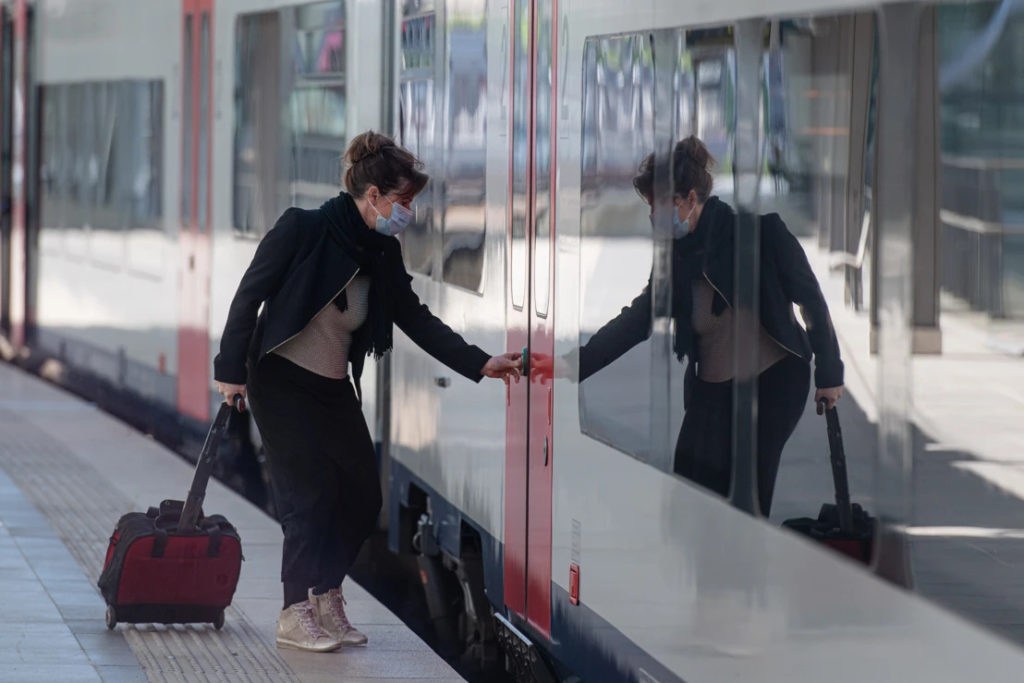Maintaining a safe and proper space between the train and platform is crucial for ensuring passenger safety and operational efficiency. Understanding the techniques and best practices for managing this space is essential for railway authorities, engineers, and station managers. This comprehensive guide will delve into the various aspects of maintaining an appropriate gap, the challenges faced, and the solutions implemented across the globe.
Importance of Maintaining Space The Between Train and Platform
The space between the train and platform plays a critical role in passenger safety. An improperly maintained gap can lead to accidents, injuries, and operational inefficiencies. Ensuring the right distance helps in:
- Preventing Passenger Accidents: A well-maintained gap minimizes the risk of passengers tripping or falling between the train and platform.
- Facilitating Smooth Boarding and Alighting: Adequate space ensures that passengers, including those with disabilities, can board and alight safely and efficiently.
- Enhancing Operational Efficiency: Proper management of the gap reduces delays caused by boarding issues, thus improving overall service punctuality.
Factors Influencing the Space Between Train and Platform
Several factors affect the space between the train and platform, including:
Platform Height and Train Design
The height of the platform and the design of the train significantly impact the gap. Platforms need to be at a compatible height with train doors to minimize the vertical space, making boarding easier and safer for all passengers.
Track Alignment
Tracks must be precisely aligned to ensure that the horizontal space between the train and platform remains consistent. Any misalignment can result in a wider or narrower gap, posing safety risks.
Wear and Tear
Over time, wear and tear of both the train and platform edges can alter the gap. Regular maintenance and inspection are essential to identify and rectify any deviations from the standard measurements.
Techniques for Maintaining Proper Space

Regular Inspections and Maintenance
Routine inspections are vital for identifying issues related to the space between the train and platform. Maintenance teams should regularly check the condition of the tracks, platforms, and train doors to ensure they meet the required standards.
Use of Gap Fillers
Installing gap fillers, such as retractable platforms or mechanical bridges, can significantly reduce the gap. These devices automatically extend to bridge the space when a train arrives, providing a seamless transition for passengers.
Advanced Track and Platform Design
Modern engineering solutions involve designing tracks and platforms that naturally minimize the gap. Curved platforms and trains with sliding doors that align closely with platform edges are examples of such innovations.
Implementation of Safety Protocols
Training staff to assist passengers, especially during peak hours, and using clear signage to direct passenger movement can help maintain safety around the space between the train and platform. Additionally, deploying platform screen doors that open only when a train is correctly aligned can further enhance safety.
Global Practices for Managing Space Between Train and Platform
United Kingdom
In the UK, many stations use platform gap fillers and height-adjustable platforms to minimize the gap. The London Underground, for instance, has implemented mechanical gap fillers at several stations to enhance passenger safety.
Japan
Japan’s railways are renowned for their precision. Stations in Japan often employ laser-guided systems to ensure trains stop at the exact spot where the gap is minimal. Additionally, platform attendants are trained to assist passengers and ensure safe boarding and alighting.
United States
In the US, various metro systems have adopted sliding platforms and automated announcements to alert passengers about the gap. The New York City Subway, for example, uses tactile paving and gap markers to guide passengers safely.
Challenges in Maintaining Space Between Train and Platform
Despite the best efforts, maintaining the space between the train and platform presents several challenges:
Infrastructure Variations
Older stations and tracks may not have been designed with modern safety standards in mind, making it challenging to retrofit them with gap-reducing technologies.
High Passenger Volume
Stations with high passenger volumes face difficulties in managing the space effectively. Ensuring that all passengers board and alight safely while maintaining the gap requires continuous effort and monitoring.
Weather Conditions
Extreme weather conditions, such as heavy rain or snow, can affect the tracks and platforms, altering the gap. Regular maintenance is essential to address these issues promptly.
Future Trends in Managing Space Between Train and Platform
Smart Technology Integration
The future of managing the space between the train and platform lies in smart technology. Sensors and IoT devices can provide real-time data on the gap, enabling quick adjustments and enhancing safety protocols.
Robotic Assistance
Robotic platforms and assistance devices are being developed to help bridge the gap automatically. These innovations can significantly reduce the risk of accidents and improve passenger convenience.
Enhanced Passenger Information Systems
Advanced passenger information systems that provide real-time updates and guidance can help manage the flow of passengers, reducing congestion and ensuring safe boarding and alighting.
Conclusion
Maintaining the proper space between the train and platform is vital for ensuring passenger safety and operational efficiency. Through regular inspections, the use of gap fillers, advanced design techniques, and the implementation of safety protocols, railway systems worldwide are continuously improving their approach to managing this critical aspect. As technology advances, we can expect even more innovative solutions to emerge, further enhancing the safety and convenience of train travel.



